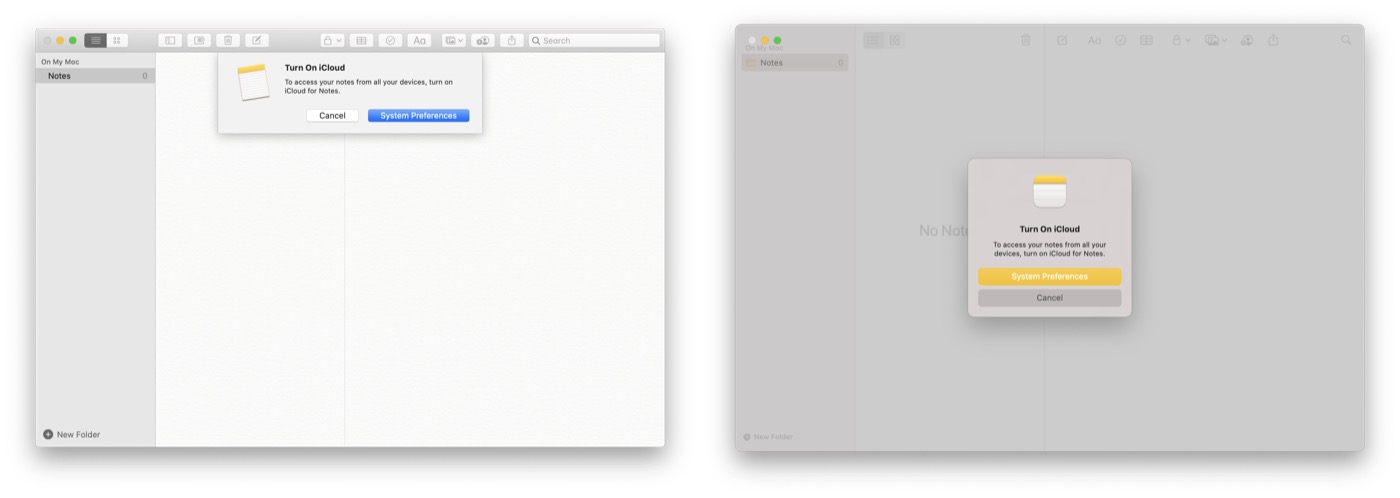

- #BIG SUR FEATURES VS CATALINA HOW TO#
- #BIG SUR FEATURES VS CATALINA INSTALL#
- #BIG SUR FEATURES VS CATALINA UPDATE#
- #BIG SUR FEATURES VS CATALINA PASSWORD#
- #BIG SUR FEATURES VS CATALINA DOWNLOAD#
You may need to enter your Apple ID and password to proceed.
#BIG SUR FEATURES VS CATALINA DOWNLOAD#
Ĭlick on “Get” or “Download”: On the macOS Catalina (or desired system) page, click on the “Get” or “Download” button to initiate the download process. Alternatively, you can directly access the macOS Catalina page by visiting the following URL. Search for macOS Catalina (or desired system): In the App Store, search for “macOS Catalina” or the specific system you want to download. You can find it in the Dock or by searching in Spotlight. Visit the Apple website or refer to the documentation to verify compatibility.Īccess the App Store: Open the App Store on your Mac. To download macOS Catalina or another system, follow these steps:Ĭheck System Requirements: Before downloading any macOS version, ensure that your Mac meets the system requirements for that particular release. Part 3: Download macOS Catalina or another system By following these steps, you can have peace of mind knowing that your Mac’s data is securely backed up. It’s also a good practice to store your backups in multiple locations, such as an external hard drive and the cloud, for added redundancy and protection.
#BIG SUR FEATURES VS CATALINA UPDATE#
Remember to regularly update your backups to ensure you have the most recent versions of your files.Allow the initial sync to complete, and subsequent changes will be automatically backed up to the cloud.Make sure you have enough storage space in your cloud storage account.Configure the cloud storage service to sync and back up your desired files and folders.
#BIG SUR FEATURES VS CATALINA INSTALL#
#BIG SUR FEATURES VS CATALINA HOW TO#
Here’s a step-by-step guide on how to make a backup copy of your Mac’s data: Time Machine Backup By creating a backup, you can protect yourself from data loss in case of hardware failure, accidental deletion, or other unforeseen events. Making a backup copy of your Mac’s data is an essential practice to ensure the safety and security of your files. Part 2: Make a Backup Copy of Your Mac’s Data Ensure all your essential apps are compatible with macOS Catalina. Step 7: Reinstall Applications and Configure SettingsĪfter restoring your data, reinstall any third-party applications and configure your settings to match your preferences. During setup, you’ll have the option to restore your data from the Time Machine backup or migrate your data from another source. Once the installation is complete, set up your Mac with the initial setup process. Follow the on-screen prompts to install macOS Catalina on your Mac. Choose your newly created bootable installer as the installation source. Step 5: Install macOS, Catalina,Įxit Disk Utility and select “Install macOS” from the recovery options. Choose the “Erase” option to format the drive and erase all existing data.

In Recovery Mode, open Disk Utility and select your Mac’s main drive. This will boot your Mac into Recovery Mode. Restart your Mac and hold down the Command + R keys until the Apple logo or a spinning globe appears. Step 3: Restart Your Mac in Recovery Mode Use a USB drive (at least 16GB) to create a bootable installer using Terminal commands or a third-party tool like DiskMaker X. Step 2: Create a Bootable Installerĭownload the macOS Catalina installer from the App Store or an authorized source. Use Time Machine or another trusted backup method to create a snapshot of your current system. Step 1: Backup Your Dataīefore starting the downgrade process, ensure you have a complete backup of your important files, applications, and settings. Learn how to downgrade to Catalina and enjoy a familiar and reliable operating system. Part 1: How to Downgrade macOS Big Sur to Catalinaĭon’t let Big Sur hold you back. Part 5: How to prevent issues with macOS Big Sur.Part 3: Download macOS Catalina or another system.Part 2: Make a Backup Copy of Your Mac’s Data.



 0 kommentar(er)
0 kommentar(er)
